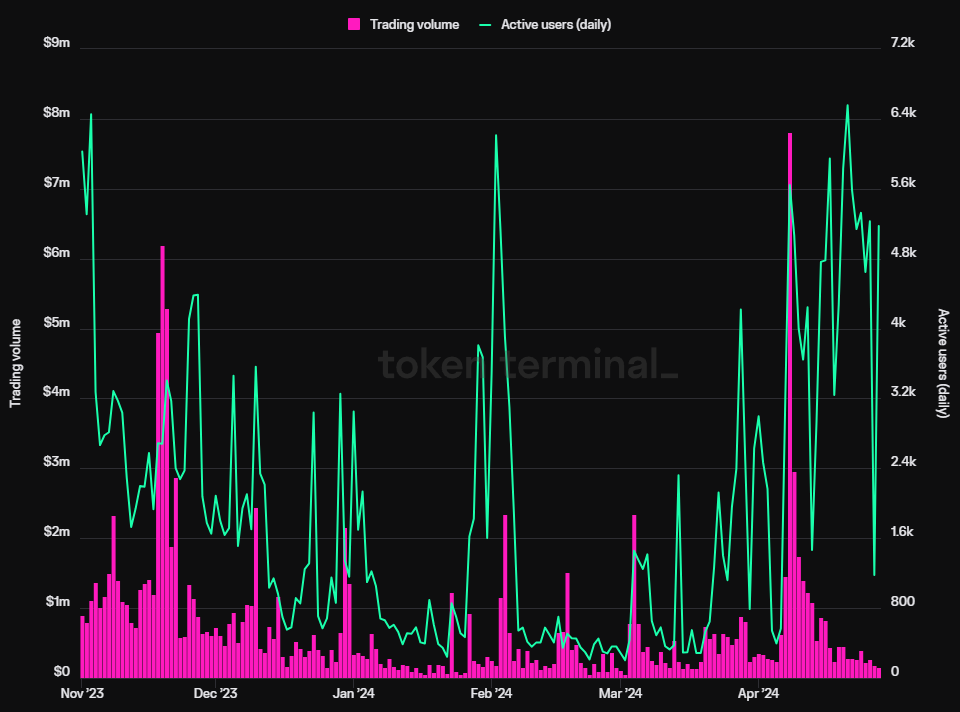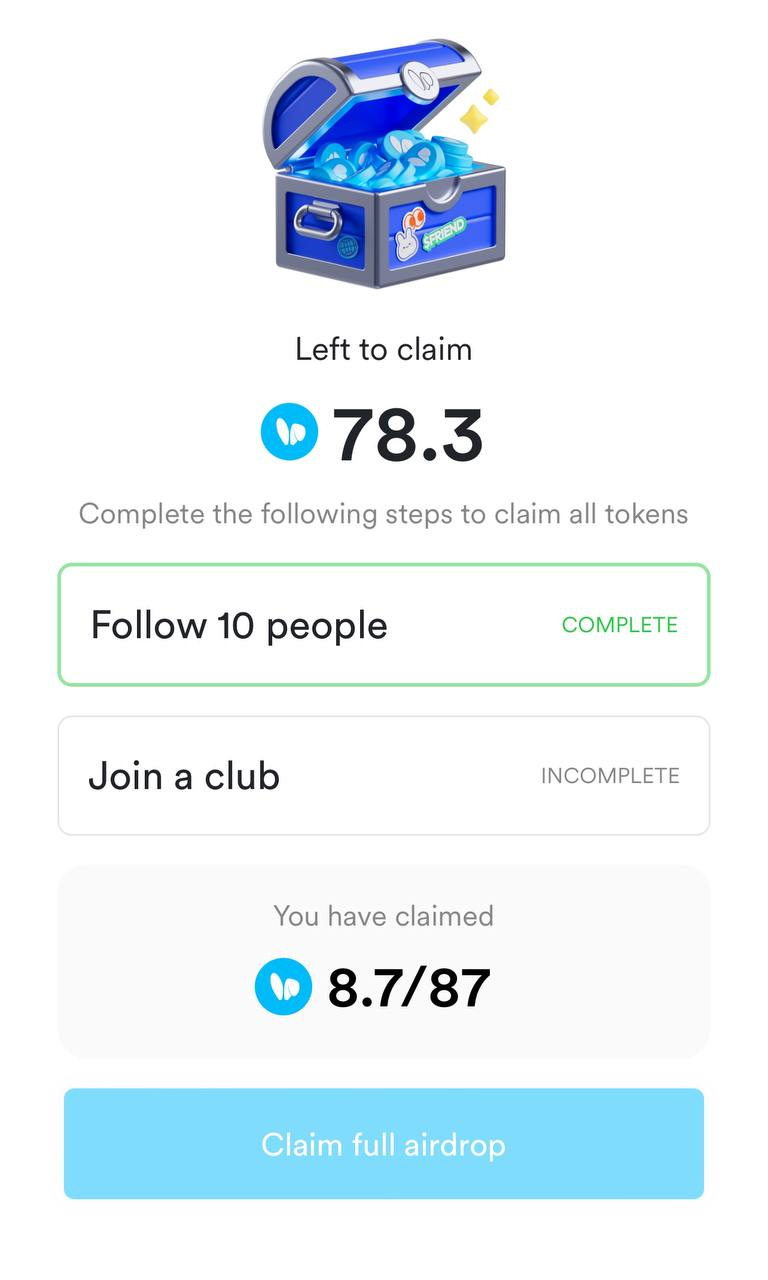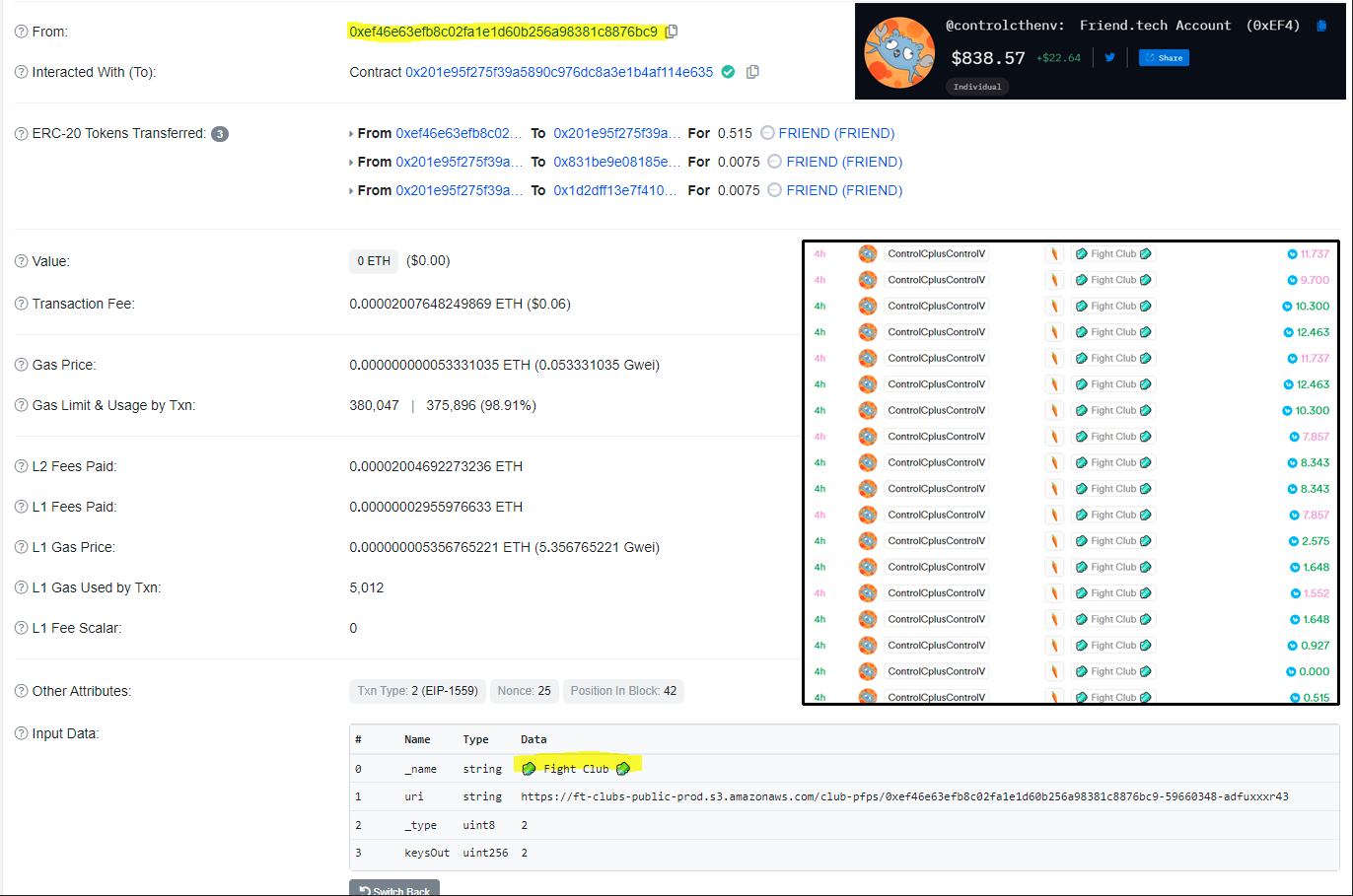This article was initially published in the Castle Chronicle.
Intro to Friend Tech
Friend Tech (FT) is one of the most successful Web3 dApps within SocialFi, which reached the highest revenue-to-net-deposits ratios ever, with more than $2M in revenue in the first month and $33M in net deposits.
It was supposed to be a big week for FT, as they launched both the V2 of the product and $FRIEND, the platform's token, introducing significant changes to enhance the protocol's sustainability and attractiveness and so on, but it turned out to be (probably) its end.
Earlier, some people were bullish about these developments while others remained bearish, but after today's developments, everyone is in disbelief.
In this article, we will delve into the new mechanics of FT V2, $FRIEND, explore any bugs it has experienced or is still experiencing, and discuss whether this business model is sustainable.
Let's begin by examining the challenges faced by the earlier version of Friend Tech.
On Friend Tech V1
FT is the first decentralized social app that has consistently generated revenue by aligning the interests of well-known crypto figures with those of retail users.
This alignment led to one of the largest user base growth, activity, and revenue increases of any new project during the bear market.
However, it wasn’t sustainable due to the fees levied by the platform.
Although KOLs and FT earned substantial revenue, retail users lost money daily. Due to the 10% tax on buying and selling, they could only profit by selling keys for at least 20% more than their purchase price.
This was only possible in periods of high platform activity and inflows, which is the main reason for the wave behaviour observed in the chart below.
Eventually, fees became a barrier to entry for many, which led FT V1 to leave many with a bittersweet mouth.
Even so, FT v1 achieved several milestones in 6 months that few protocols achieve in their entire lifetime:
• Generated approximately $13M in fees:
• Made $130M in trading volume (probably the highest volume achieved by a SocialFi dapp):
• Distributed about $6M in revenue among its users:
On Friend Tech V2
FT V2 was released on Friday, 3rd of March 2024.
As part of this much-awaited update, users can finally claim their $FRIEND tokens.
However, the launch seems to have fallen short of expectations, including the lack of information surrounding it.
This was the only official announcement of FT Twitter since its launch
Understandably, this left many puzzled by the dynamics of the airdrop claim.
Users can only claim 10% of their airdrop (provided they follow at least 10 people) and need to join a club to claim the other 90%.
However, these requirements are not clear, as there are no pop-ups or directions in the app, and in many cases, even joining a club does not allow users to claim.
What are clubs?
Clubs are one of the main novelties introduced by FT V2.
Anyone can create a new club. Clubs are defined as “group spaces” owned and moderated by keyholders; however, we don’t know how they will be used in the future.
Here’s how clubs work:
• Keyholders vote for the club president
• The president manages the club and chooses the moderators
• All club keys are transacted using $FRIEND
• Each club transaction is subject to a 1.5% transaction fee distributed between farmers and FT
Something interesting that we have observed using the Base Scan contract interface is the changeBestFriend and changeBestFriendfee, which we can speculate will be used to allow anyone to add a best friend, which can benefit from trading our keys with less or no fees.
We can also speculate that FT will soon introduce referral fees (point 7) and we also know that club keys are transferrable (and maybe even user keys will become so?).
The one below (Fight Club) is the first club ever as represented by the FT#1, and Racer is actually its president, as reflected in the key price.
However, he did not create the club himself, as can be observed from the picture below.
When creating a club, users can select the following:
Name
Description
Price Curve (standard or exclusive)
How many keys to buy
Nonetheless, it is fair to mention that most of these are assumptions, as FT is expected to provide more information about Clubs and their mechanisms.
Users also need to be careful about a few elements when interacting with clubs: anyone can transfer club shared to other people and name them presidents.
For this reason, you have to be really careful about well-known people being nominated presidents: they might not even be aware of it.
For instance, this morning we created a random club and invited Racer to it! 👀
Be aware that clubs can have the same name, so always check the FT# of the club to ensure you are buying the right one.
In addition to these changes, the Web App's homepage has also changed. It now shows new elements, including “Farms” (LPs), Airdrop Claim, and rewards.
Currently, users can only claim their airdrop, create a club, Buy and Sell tokens, and LP them for rewards in the farm.
In addition, many are highlighting how the role of keys hasn’t really changed, nor their utility expanded. The social media element that was supposed to change the direction of the platform also appears to be missing or underwhelming.
Nonetheless, we don't know whether this is the final release or a new update will be released soon.
Last but not least, many had higher predictions for the price of $FRIEND.
Coupled with the absence of new use cases for keys, this could be the difference between an airdrop being worth it, with many fumbling their bags and dumping their $FRIEND token.
Together, all of these elements make it harder to envision this model's long-term sustainability and success, given the current design, which might or might not be final.
It’s also important to mention a delay between the on-chain actions done and what is reflected in the FT UI.
We have observed a delay of about 3-4 hours.
Is the Friend Tech Model Sustainable?
Many have questioned the sustainability of the FT model, and while they have been initially dismissed due to the incredible initial traction of the dApp, those critics have grown louder as the hype of FT seemed to be fading.
As FT V2 moves away from the influencer-centric model of its V1 launch, the protocol aims to reduce its dependencies and become more sustainable.
Dependence on influencers is, in fact, a single point of failure: a social network's value is only that of its users. Missing many vital names would make FT much less appealing.
What is the value of a Hsaka or Ansem key if they rarely connect to the app, let alone share alpha there?
This could be one of the critical reasons the team recently pivoted towards a more community-centric (read: degen) approach.
This is one of the key points for FT: how do they ensure that users are incentivized and prefer their app over Twitter, Farcaster, Lens, and others?
Despite the hype following the token's launch, FT did not attract the same level of attention as it did in the previous two waves.
Many had speculated that the protocol would receive gradually increased attention as it approached the release of $FRIEND. Nonetheless, the current metrics are far from those expected.
Will this be another case of sell the news?
Or will the much-awaited V2 release transform Friend Tech into the leading social-fi app and attract a new user base?
The current version of FT V2 seems to lack several key features, which have been removed from the app.
For these reasons, it is possible to speculate that this will not be the complete version of FT 2 and it will be followed by an upcoming update.
We want to end this piece with a reflection: Is this everything FT could develop after 8 months, with insane funding, resources, and hype? Or is this another masterful tactic from the team, gathering all negative feedback, iterating, and releasing a final version of the app?
Seems like the latter.
Food for thought.

















